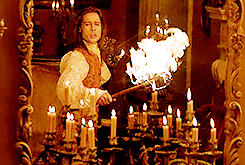Don't wanna be here? Send us removal request.
Text
A moment for appreciation for the beautiful cinematography of TVC




0 notes
Text
Connection to their previous humanity and morals

Her characters are some of the earliest vampires who have a connection to their humanity and morals. Before Rice’s work, Vampire media depicted them as monsters without humanity or a moral compass. She paved the way for the vampires in Twilight and TVD, allowing us to relate and sympathize with them. In IWTV, Louis is described as “a vampire with a human soul, an immortal with a mortal’s passion.” His inner conflict and mourning of his mortal self adds depth to his character, making him so captivating it urges you to continue reading. Or watching, in this case.

^^ Armand telling Louis he is a vampire with a human soul
0 notes
Text
Ricean Vampirism and Catholicism
She creates complex and multi-faceted relationships with vampires and catholicism. There's a lot of existentialism and questioning of the existence of god in the series. It's a prominent theme. Many vampires, like Louis and Lestat, came from Catholic backgrounds. Immortality had an influence on how they viewed the existence of god and the concept of hell and damnation. In The Vampire Lestat, Lestat has an existential crisis about damnation. But he eventually comes to the conclusion that the existence of god is irrelevant to vampires and embraces his vampire nature. He tries to help Louis overcome this but is unsuccessful.


In IWTV, Louis questions if they are all damned because of vampires evil nature. He asks himself, “Am I damned? Am I from the devil? Is my very nature that of the devil?” This line says a lot about how Louis continues to hold onto his Catholic morals and how he perceives himself as cast away from god.
0 notes
Text
Pretty Vampires
She was the blueprint for modern vampire characters. She introduced the concept of making vampires beautiful, alluring, and charming creatures rather than hideous monsters. Nevertheless, she still maintains their vampiric nature.




0 notes
Text
She created some of the most well-known queer vampires.

While she may not have been one of the first to create queer vampire characters, hers are definitely some of the most iconic and well-known. When she created her characters, making them bisexual was extremely natural to her. This was important, too, because she was creating queer characters in the 1970s when society was a lot less progressive and accepting of queer people. Her books gave queer people an outlet where they felt represented in a time where there was little representation.

She was also a very strong advocate for the LGBTQ+ community. Writer, actor, and activist Phaylen Fairchild was a fan of her. Rice was the first person she came out to as gay. Fairchild later came out to her as trans, and she was very supportive of her. Fairchild says she made her feel more comfortable in her skin and her journey. This is one of the many ways that Anne Rice and her works have positively impacted the queer community.

0 notes
Text
Anne Rice's Impact on Vampire Fiction

When you hear someone mention vampire books or movies, Twilight by Stephanie Meyer or The Vampire Diaries are likely what you think of. To be fair, they are both very popular vampire series. Personally, I think the most iconic vampires in pop culture have to be Anne Rice’s vampires in her series The Vampire Chronicles. It is the best! Well, to me at least. Obviously, Dracula and Nosferatu are more classic and iconic. But Rice’s fictional vampire universe has so much depth to it and brings new perspectives to vampire characters in pop culture; she gives them more humanity and makes them more relatable. The way Rice writes makes us root for the vampires even when they do horrible things. She also brought queer vampires into pop culture and gave queer readers characters they could relate to and feel represented by.

0 notes